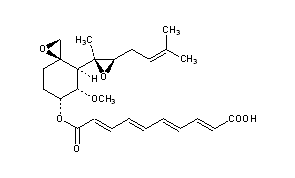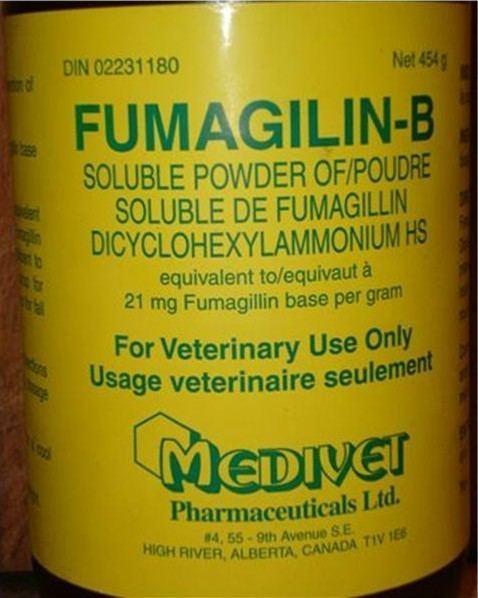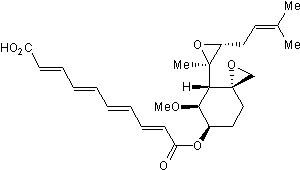CAS Number 23110-15-8 DrugBank DB02640 Molar mass 458.54 g/mol | PubChem CID 6917655 ChemSpider 5292885 CAS ID 23110-15-8 | |
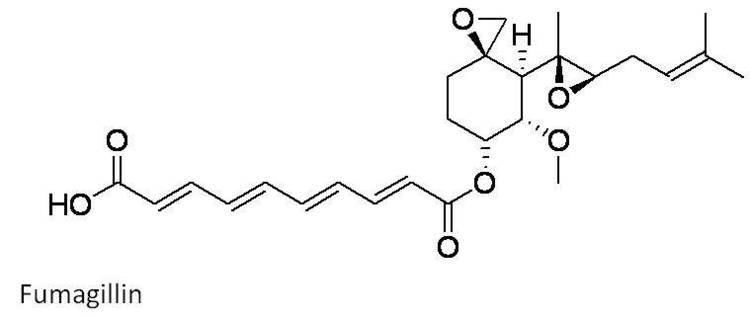 | ||
AHFS/Drugs.com International Drug Names ATC code P01AX10 (WHO) QP51AX23 (WHO) | ||
Fumagillin is a complex biomolecule and used as an antimicrobial agent. It was isolated in 1949 from the microbial organism Aspergillus fumigatus.
Contents
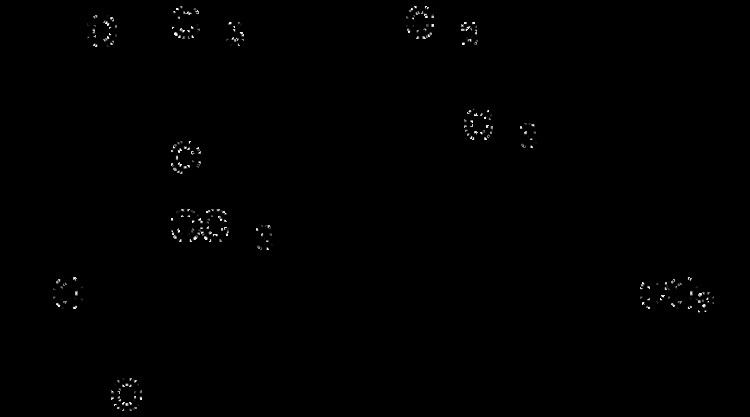
How to pronounce fumagillin
In animals
It was originally used against microsporidial parasites Nosema apis infections in honey bees.
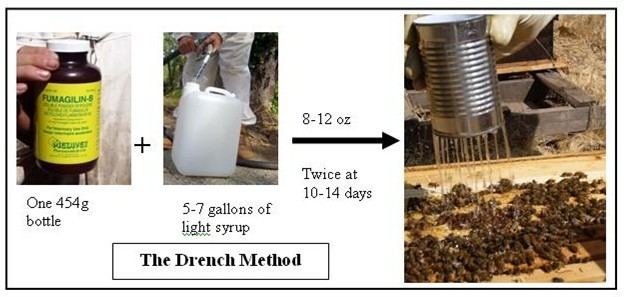
Some studies found it to be effective against some myxozoan parasites, including Myxobolus cerebralis, an important parasite of fish; however, in the more rigorous tests required for U.S. Food and Drug Administration approval, it was ineffective.
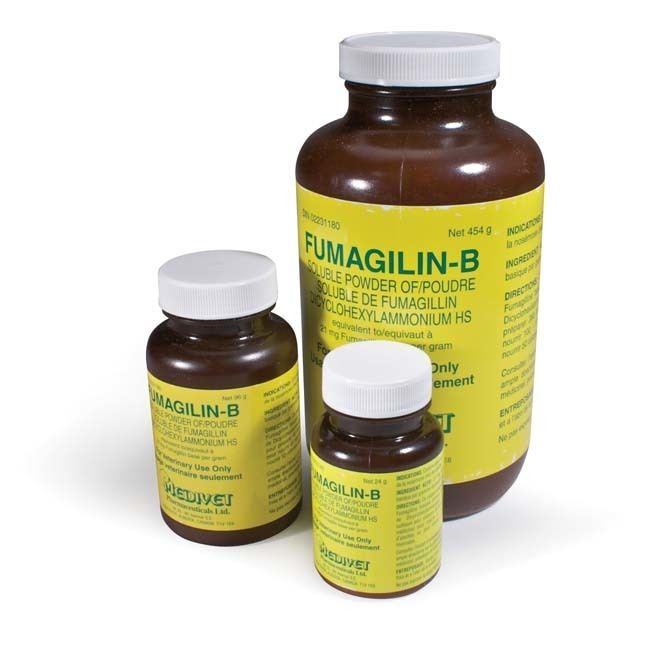
There are reports that fumagillin controls Nosema ceranae, which has recently been hypothesized as a possible cause of colony collapse disorder. The latest report, however, has shown it to be ineffective against N. ceranae. Fumagillin is also investigated as an inhibitor of malaria parasite growth.
In humans
Fumagillin has been used in the treatment of microsporidiosis. It is also an amebicide.

Fumagillin can block blood vessel formation by binding to an enzyme methionine aminopeptidase 2 and for this reason, the compound, together with semisynthetic derivatives, are investigated as an angiogenesis inhibitor in the treatment of cancer.
Preliminary clinical trials are being conducted by Zafgen into using the fumagillin analog beloranib for weight loss.
According to Zbidah and coworkers from Germany fumagillin is toxic to erythrocytes in vitro at concentrations >10uM.
Total synthesis
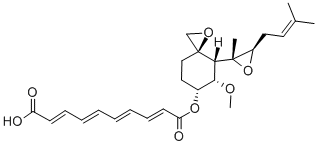
Fumagillin and the related fumagillol (the hydrolysis product) have been a target in total synthesis, with several reported successful strategies, racemic, asymmetric and formal.
